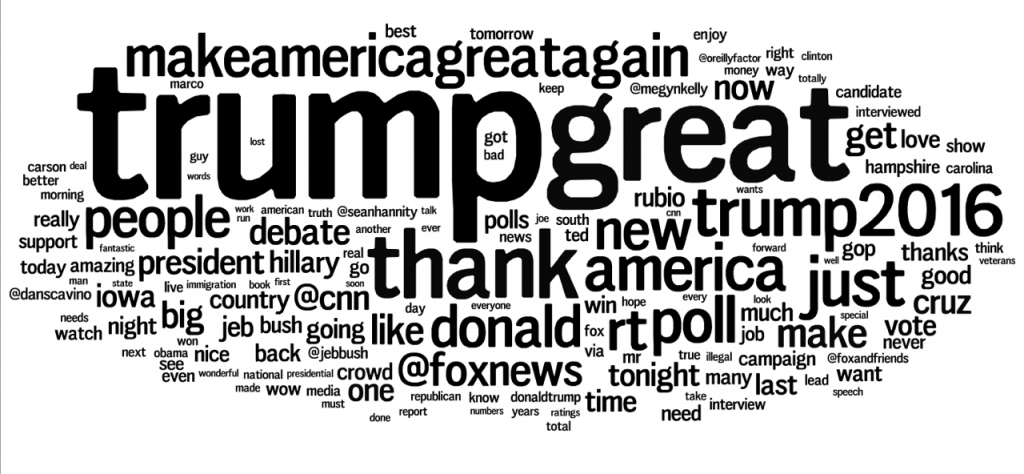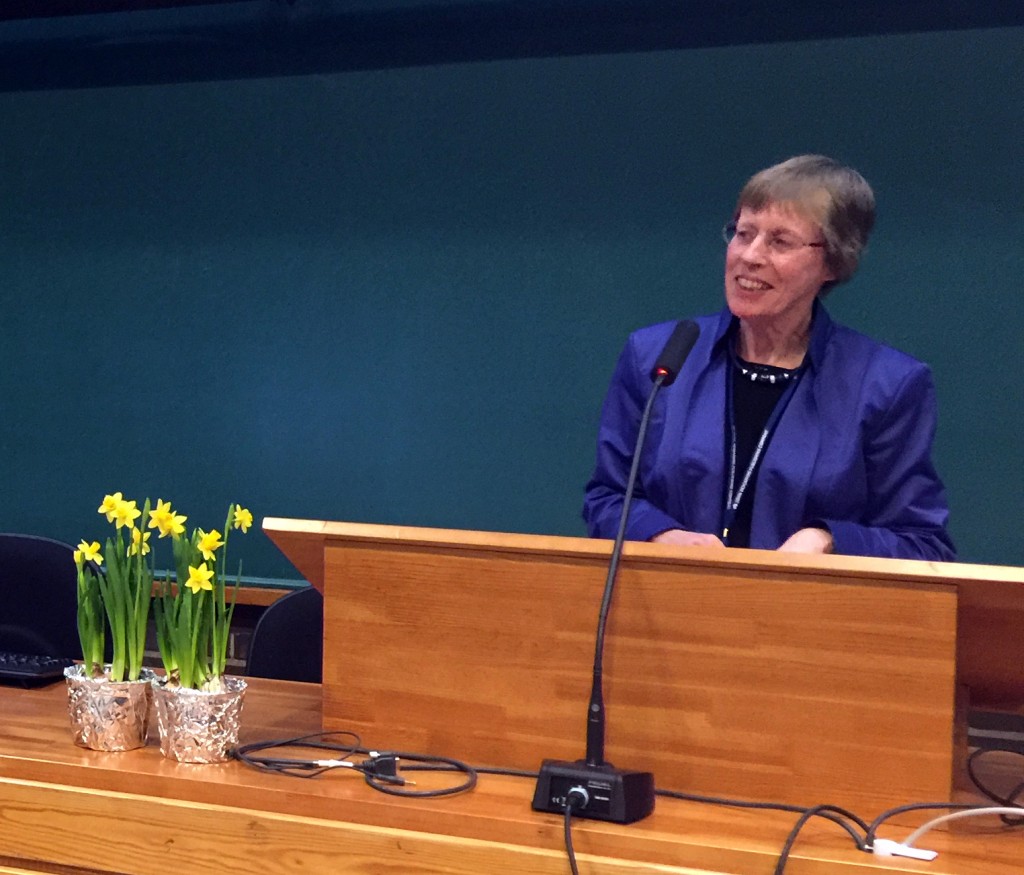Dr. Jukka Tyrkkö has been researching the sociolinguistic aspects of political discourse. Up until recently everything seemed to be going pleasantly, but then along came Trump, and skewed all the data.
Tyrkkö’s closing plenary of the HiSoN conference dealt with two corpora. One of them is a small corpus of speeches delivered between 1800 and 2015. Taking a macro approach to language data, this research focuses on the trends and tendencies of features such as sentence length, word length and readability score. The other one is a political Twitter corpus gathered from tweets of the 2016 US presidential primaries.
From the political speech to the political tweet

In the beginning of his talk, Tyrkkö warned the audience that they would get “more Trump than is healthy”.
The nature of political speeches has changed dramatically over time. Technological advancements, like the invention of the radio and television, and more recently the internet and social media, play a major role in these changes.
Whereas political speeches held in the beginning of the 20th century used to consist of long and complex sentences, in today’s social media oriented world political messages have to be short and easy to grasp.
Dr. Tyrkkö explains that the never ending election cycle pushes politicians to focus their message on winning the popular vote and leaves little room for “boring” fact-based politics that requires in-depth understanding of issues.
Add to this a politically passive audience that experience information overload as it is, and you get ideology based argumentation that dilutes complex political issues into an us vs. them set-up and thrives on hyperbole – the art of exaggeration. Everything is the best or at the very least just plain great. Can you already see how Trump’s slogan “Make America Great Again” fits in with all of this?
Jukka Tyrkkö claims that political messages can now be incomplete ramblings as long as there is something that grabs the listener’s attention.
A different kind of candidate
Donald Trump is a businessman and currently a candidate for the presidential nomination of the Republican Party in the United States.
Over the last 10 years there has been a shift from rational to ideological leadership, and as can be seen from Trump’s election speeches, he successfully exploits this fact. His electorate speeches are often inconsistent ramblings that go off topic and exaggerate, pleading to the emotions of his audience rather than presenting factual arguments.

Worldcloud compiled by Jukka Tyrkkö based on Trump’s most recent tweets. The size of the font in the wordcloud increases with the frequency of the word in the tweets.
Coming back to how Trump has skewed the data of political speeches, it’s useful to consider how his speeches differ from his fellow politicians. Whereas the average word length of politicians of present-day English is five characters in length, the same number for Trump is 3.85. Another characteristic of Trump’s discourse is that he loves to talk about himself and address his audience directly with his top five words being: I, going, you, they, and of course, Trump.
New world, modern tactics
Judging from the tweets of modern day politicians, it might seem like current politicians are simply not intelligent and rational individuals.
Dr. Tyrkkö claims however, that it is more likely that “politicians and their teams are deliberately dumbing down election speeches”. Modern politicians are not more simple or stupid than their predecessors. They have only adapted their tactics to be in line with the rules dictated by the new media.
After listening to the plenary, we fear that if we do not require fact-based argumentation and rational decision-making from our politicians, we may end up with a rabble-rouser for president.
Tyrkkö’s research article on the subject, including full references and detailed statistical data will be published in the near future.
The HiSoN (Historical Sociolinguistics network) conference was held at the University of Helsinki, Finland from 10–11 March, 2016. Particular emphasis was placed on the social aspect of historical linguistics this year. Over 50 sociolinguists from 17 countries participated in this year’s conference, with over 20 languages represented in the papers.
Text: Iida Hinkkanen, Tina Lin, Anna Suutarla. Photos: Anna Suutarla.
Read more
Another blog post from the HiSoN conference: Letters looted by pirates offer invaluable knowledge on everyday language




